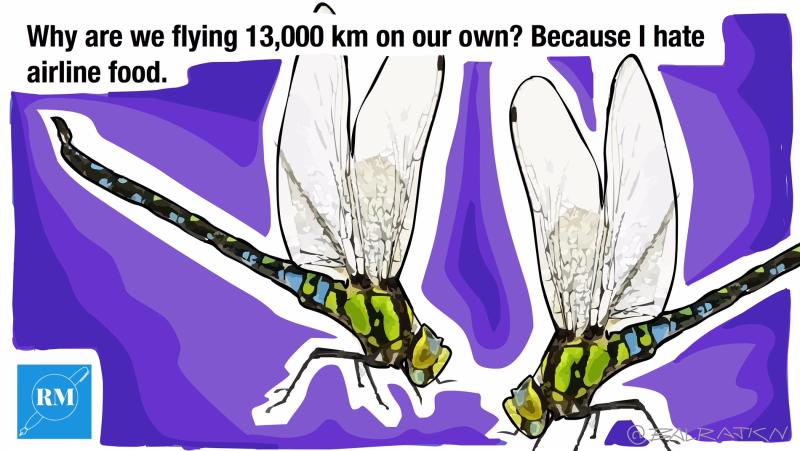
The words ‘insect migration’ bring to mind the vibrantly coloured monarch butterflies, making their way from Mexico to the south of Canada by the tens of thousands. Less conspicuous but just as spectacular is the migration that takes place across the Indian Ocean, which is believed to be the longest insect migration ever recorded.
Each year, with the onset of the monsoon rains, you can notice an increase in the number of dragonflies across most of India. These light and agile flying insects are regularly seen around pools and puddles of fresh water, which they use to lay eggs and complete their life cycle. But until recently, it was unclear where they came from and where they went after the monsoon.
Dr. Charles Anderson, an independent biologist, wondered why they would swarm to the island nation of Maldives at a particular time of the year, even though the islands there lacked freshwater needed for them to lay eggs. He started collecting data on the arrival dates of dragonflies on the western Indian coast, Maldives, Seychelles and parts of Africa. These observations, collected over 14 years, were then pooled with meteorological data.
The findings confirmed what could have scarcely been imagined - these dragonflies, a majority of which consisted of the species globe skimmer (Pantala flavescens), were literally skimming the globe for a distance of 13000 kilometers! They took advantage of the monsoon winds to migrate from the Indian subcontinent to the east coast of Africa and back. On the way, they the pools and puddles made by the local monsoon rains to completely their reproductive cycle.
The insect world always has fascinating facts to amaze us and this is just another one!





